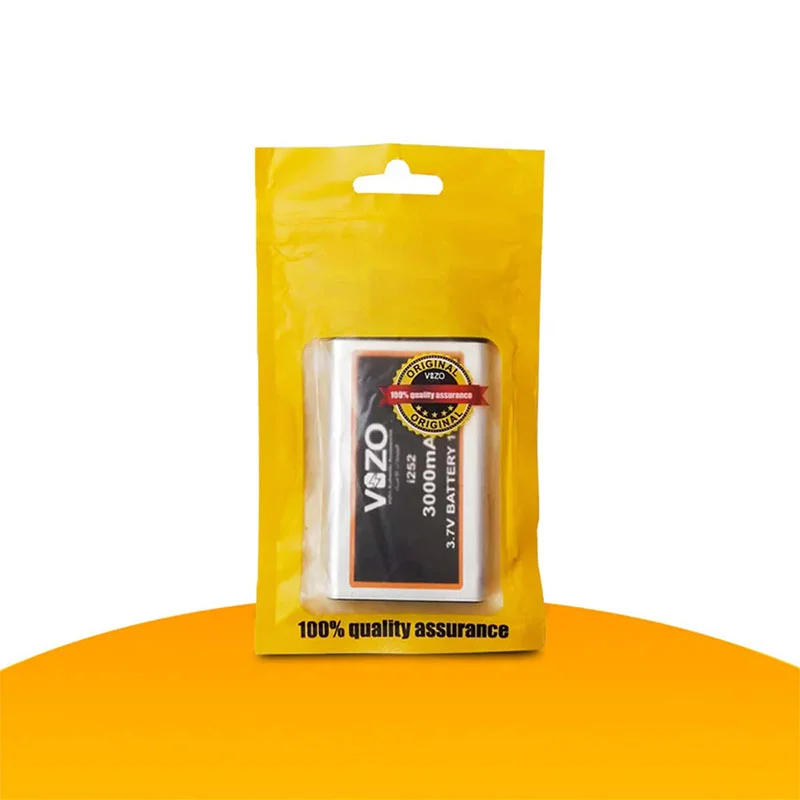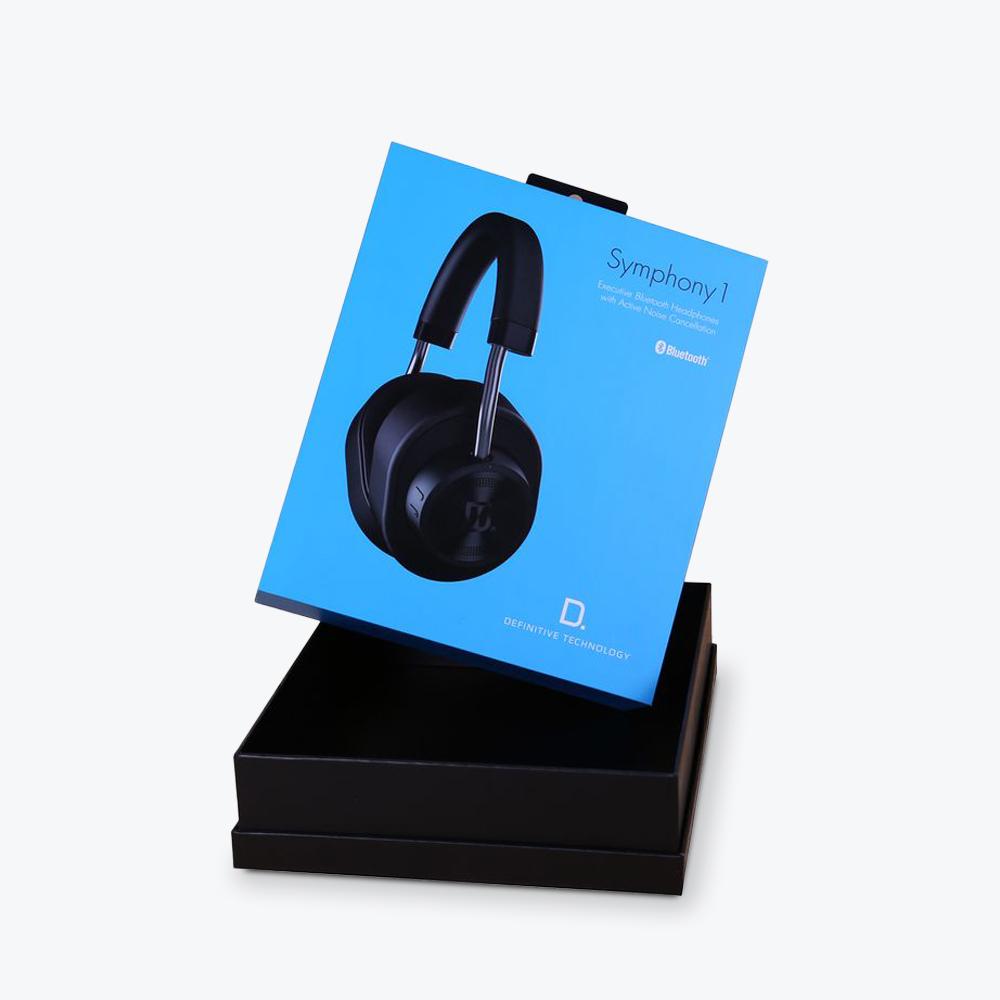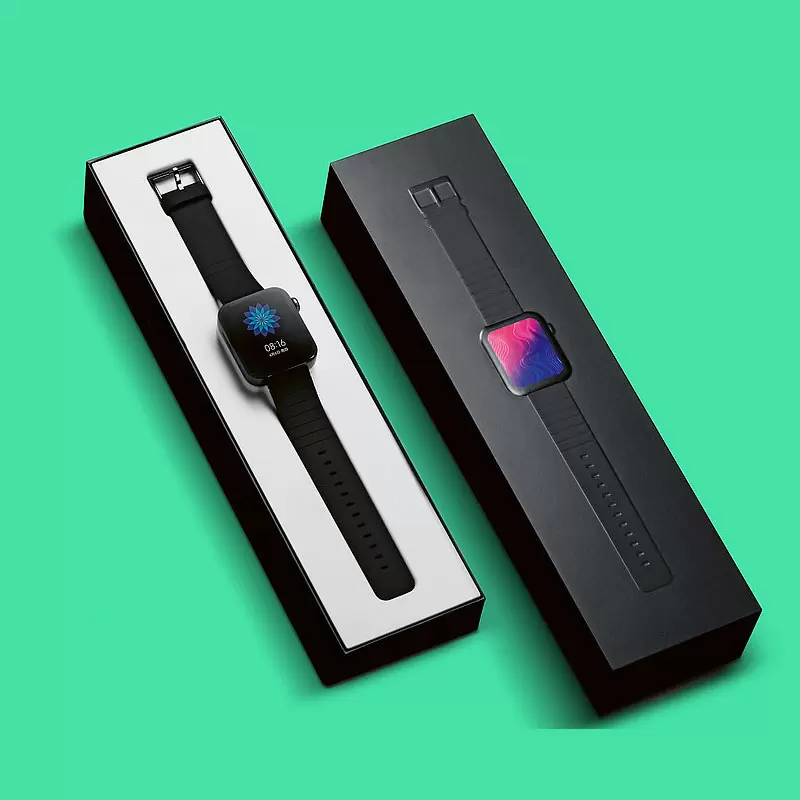Electronics Packaging Wholesale
Electronics Boxes with Logo

Get Started
Premium Electronics Packaging Solutions for the Modern World
In today’s fast-moving electronics marketplace, packaging does far more than merely contain a product. It protects fragile components, showcases brand identity, and ensures your items arrive in perfect condition. With increased shipping volumes, global distribution networks and discerning consumers, the right packaging isn’t just optional—it’s essential.
This guide walks through everything you need to know about custom electronics packaging—from materials and design considerations to protection standards, sustainability, branding, logistics and FAQs. By the end you’ll be fully equipped to select packaging that not only safeguards your electronics, but enhances brand perception and delivers cost-effective performance.
1. Why Electronics Packaging Matters
Protecting your investment
Electronics products are inherently fragile: printed circuit boards (PCBs), delicate connectors, display panels, battery cells, sensors—all vulnerable to shock, vibration, moisture and electrostatic discharge (ESD). Without adequate packaging your product could arrive damaged, refuse to power on, or fail prematurely. That means returns, warranty claims and lost reputation.
Branding & unboxing experience
As the packaging is often the first physical interaction a customer has with your product, it acts as a brand ambassador. A high-quality box with clean graphics, well-fitted inserts, and a premium finish can convey value and credibility. In contrast, flimsy packaging undermines trust—even if the internal device is high performance.
Shipping & logistics efficiency
The right packaging design saves shipping costs, reduces damage rates and improves handling. By optimizing size, weight and protection, you reduce wastage (returns, replacements) and also decrease freight costs. For global shipping, proper packaging becomes even more critical to survive handling, customs transfers and climatic variations.
Regulatory & ESD compliance
Many electronics contain ESD-sensitive components or battery-powered modules with safety obligations. Packaging needs to conform to regulations (e.g., UN transport rules for lithium batteries) and include features (like anti-static bags, foam inserts, proper cushioning) to mitigate risks.
Given all that, designing your electronics packaging is not an afterthought—it’s a crucial investment in your product’s success.
2. Key Components of Effective Electronics Packaging
Material selection
Corrugated cardboard – Common and cost-effective for shipping outer cartons. It offers stacking strength, cushioning when paired with inserts, and good printability.
Rigid or semi-rigid boxes – Often used for premium retail packaging. These provide a stiff structure, excellent presentation and better protection.
Kraft or eco-friendly papers – Increasingly used when sustainability is a priority; less “flashy” but communicates an eco message and can be reinforced.
Foam or molded inserts – Custom-cut foam (EPE, polyurethane), molded pulp or die-cut trays hold your device securely, preventing internal movement that causes damage.
Anti-static / ESD-safe materials – For electronics containing sensitive components, materials like static-dissipative foam, metallised bags, conductive trays, or ESD‐coated packaging help prevent electrostatic discharge.
Barrier films and moisture protection – For devices vulnerable to humidity or condensation, barrier bags with desiccants or puncture-resistant films ensure the internal micro-environment remains safe.
Structural design & fit
A snug fit reduces internal movement during transit, which is a main cause of damage. Custom-sized packaging means less void space and better protection.
Consider stacking loads, drop heights, vibration profiles. Packaging should be designed to survive retail handling, warehouse stacking and shipping drops.
Handles, flip-top lids, magnetic closures or easy-open features may add premium value, especially for branded retail packaging.
Print, finishing & branding
High-resolution printing supports brand recognition: logos, taglines, product imagery, diagrams.
Finishing options enhance perception: matte or gloss lamination, soft-touch coatings, embossing/debossing, foil stamping, die-cut windows.
Choose print techniques like digital (for short runs), offset (for cost-effective longer runs), or combination methods depending on budget and volume.
Brand messages can highlight features such as “Shock-Resistant”, “ESD-Safe”, “Eco-Friendly Packaging”, which reinforces quality.
Protection & functional features
Shock absorption: Inserts, foam, bubble wrap or molded pulp.
Vibration isolation: Use corrugated fluting, layered materials, transit-tested designs.
Compression / stacking strength: Especially for storage and shipping‐pallet loads.
ESD protection: Using metallised bags, conductive trays, static-dissipative foam or coatings.
Moisture / humidity control: Desiccants, barrier films, sealed bags.
Thermal/spill resistance: For devices with batteries or heat‐sensitive parts.
Tamper evidence / security: Holographic seals, shrink wrap, tamper-evident labels to protect high-value electronics.
Sustainability & materials
Sustainability is increasingly demanded by consumers, retailers and regulators:
Use recycled materials in corrugated or paperboard.
Choose FSC-certified forests for paper packaging.
Consider post‐consumer recycled (PCR) content.
Design for reuse or easy recycling: e.g., minimal adhesives, mono-materials, or packaging which can be repurposed.
Communicate your eco-credentials on the package: “Made from 90% recycled material”, “Fully recyclable”, etc.
3. Customization Options at a Glance
When you work with a packaging supplier or manufacturer that specializes in electronics packaging, you unlock extensive customization possibilities. These include:
Custom dimensions & shapes that match your device precisely (reducing wastage and shipping volume).
Colour matching & multi-colour printing to align with your brand palette.
Special finishes and textures like foil, soft-touch lamination, spot UV, emboss/deboss.
Window cut-outs or display boxes if you want your product visible in retail.
Functional additions such as built-in trays, separators, divisions for accessories (cables, adaptors, manuals).
ESD safe finishing: conductive coatings, metallised film inside the box, antistatic foam inserts.
Packaging combinations: primary packaging (retail box) + secondary (shipper carton) + tertiary (pallet wrap) designs.
Volume tiers & small batch capability: short runs for prototypes or limited editions, scaled runs for mass production.
Logistics design: pre-configured assembly lines, tuck flap auto-folders, easy open features, barcode or RFID print zones.
Eco-options: recycled stock, compostable inserts, minimal inkprint, simplified pack design for recyclability.
With a comprehensive customization suite, your electronics packaging becomes a strategic asset—not just a wrapper.
4. Industry Applications & Product Examples
Electronics packaging spans a wide range of product types—from tiny earbuds to large appliances. Here are some common use-cases:
Mobile phone & smart device packaging: Small, premium boxes with tight tolerances, custom die-cut trays, authentication labels.
Headphones / audio gear / speakers: Larger boxes with foam inserts, clear windows to show the product, vibrant graphics.
Power banks / USB accessories / cables / adaptors: Compact packaging often with blister windows, hang-tabs for retail shelving, printed user diagrams.
Home appliances / air-conditioners / vacuum-cleaners: Large corrugated ship-cases, heavy-duty handles, stacking strength, multi-piece pack.
Battery-powered devices / toothbrushes / wearables: ESD sensitive or battery regulated packages, moisture barrier bags, tamper proof seals.
Regardless of the product size or type, the same packaging principles apply: protection, fit & finish, brand alignment, logistics optimization.
5. Step-by-Step: How to Select & Implement the Ideal Packaging
Step 1: Audit your product & logistics
List all parts, accessories, cords, manuals, packaging requirements.
Determine weight, dimensions, fragility, ESD sensitivity, regulatory concerns (e.g., battery shipments).
Review shipping modes: domestic, international, air, ocean, palletised.
Analyze storage/handling: warehouse stacking, in-store display, shelf life.
Determine your brand positioning: luxury vs budget; retail shelf vs e-commerce shipping.
Step 2: Define protective requirements
Based on drop-test standards (e.g., ISTA, ASTM) determine what level of protection you need.
Identify if you require ESD protection, moisture control, tamper evidence, display features.
Estimate stack loads in warehousing, vibration profiles during transport, environmental factors (heat, humidity).
Step 3: Select materials & structure
Choose box style: straight tuck, reverse tuck, auto-bottom, rigid setup, corrugated shipper, etc.
Select board type: single-wall, double-wall corrugated; paperboard vs rigid.
Choose insert approach: foam, die-cut pulp tray, corrugated tray, adjustable compartments.
Choose finishing: print quality, lamination (matte/gloss), special effects (foil/emboss).
Step 4: Work with your packaging partner for customization
Supply your product CAD files or technical drawing so the packaging supplier can design the fit.
Choose colour palette, artwork, brand messaging, legal/regulatory marks.
Decide on volume tiers, prototypes, tooling costs, lead times.
Request structural proofing (e.g., flat trifold sample) and print proof for colour approval.
Step 5: Test & validate
Conduct drop tests, compression tests, vibration tests as required. Ensure your product arrives intact.
Validate that inserts and packaging design prevent internal movement or damage.
Ensure ESD packaging meets required standards (if applicable).
Review packaging fit into shipping cartons, pallet building efficiency, secondary/tertiary packaging compatibility.
Step 6: Launch & monitor
Roll out your packaging in pilot volumes.
Monitor damage/return rates, shipping costs, customer feedback.
Adjust packaging design for future versions: perhaps thinner inserts, lighter materials, simplified structure for cost savings.
Communicate the upgraded packaging as part of your brand story (e.g., reduced carbon footprint, premium unboxing experience).
6. Common Mistakes to Avoid
Using generic packaging: It may seem cost-effective initially, but poor fit and protection often lead to damage and returns.
Over-sizing the box: An oversized box increases movement of internal parts, increases material cost and shipping volume.
Ignoring ESD or moisture risks: Particularly for electronics, neglecting these can lead to latent failures or customer returns.
Neglecting logistics & shipping environment: A box that looks good in the warehouse may fail during global multi-modal transit.
Ignoring branding & unboxing experience: Your packaging is part of the product. A low-quality box undermines perceived value.
Skipping testing: Without real-world simulations of shipping, you risk finding failure only after large volumes are out.
Neglecting sustainability: Consumers and retailers increasingly reward eco-friendly packaging — missing this can reduce competitiveness.
7. Sustainability in Electronics Packaging
Eco-friendly packaging is no longer optional. It’s a strategic differentiator. Here’s how you can incorporate sustainability:
Use recycled corrugated board (e.g., 70–100% post-consumer content).
Reduce ink usage or switch to vegetable-based inks.
Choose mono-material structures (paperboard only) for easy recycling.
Design packaging to be flat-packed or minimized when empty to reduce shipping volume.
Offer secondary reuse (e.g., box becomes storage for the product).
Explicitly communicate your “green” credentials on the packaging, building trust and strengthening brand loyalty.
By integrating sustainability, you do not just protect your product—you protect the brand’s reputation and help meet retailer/consumer demands.
8. Why Work With A Specialist Electronics Packaging Manufacturer?
Industry experience: A specialist understands electronics’ unique needs—ESD, sensitive components, regulatory packaging for batteries, etc.
Custom engineering: They can match insert geometry, box strength, protective features to your exact product.
Print & finishing expertise: They’ll offer off-the-shelf printing/finishing plus premium options like soft-touch, emboss, foil.
End-to-end services: From prototyping to mass production, warehousing, drop shipping.
Scalability: They support everything from short runs/prototypes to high-volume global shipments—helping you scale.
Support & reliability: With dedicated account teams, rapid quoting, free shipping options and volume discounts, they become a partner not just a vendor.
9. Cost Considerations & Tips for Optimization
When budgeting packaging for electronics, keep in mind:
Tooling & setup costs: Custom die-cut trays, special finishes cost more initially.
Volume breaks: Higher volumes reduce per-unit cost significantly.
Material trade-offs: Single-wall corrugated is cheaper than double-wall; but doesn’t provide same strength.
Insert vs over-engineering: Quality foam inserts may cost more upfront but reduce damage/returns, saving money downstream.
Shipping volume = shipping cost: A heavier, larger box increases freight costs (especially air freight). Optimize dimensions for efficient pallet stacking.
Mixed SKU packaging: Try designing packaging that accommodates multiple variants—reduces need for different die lines.
Reuse of art/structures: Use existing box structures or moulds where possible and refresh graphics for variants instead of redesigning entirely.
Testing early saves cost: Discovering damage issues early avoids expensive recalls or re-packaging.
10. Ready to Get Started?
If you’re looking for a packaging provider who understands electronics—both in protection and presentation—begin by gathering your product specifications, accessory list, shipping modes and brand requirements. Ask for:
Prototyping/test runs
ESD compliant options
Insert designs
Print finishing options
Sustainability credentials
Lead time and shipping costs
Minimum order quantities and volume discounts
A full-service partner can help you move from concept to finished packaging quickly while maintaining quality, cost control and brand integrity.
FAQ – Frequently Asked Questions
Q1. What is ESD packaging and why is it important?
ESD stands for Electro-Static Discharge. ESD packaging uses conductive or static-dissipative materials (like metallised film bags, conductive foam, trays) to prevent sudden discharges of electrostatic energy which can damage sensitive internal electronics long before the product is powered on. By using proper ESD packaging, you reduce latent failures and improve reliability for the end user.
Q2. What materials are best for electronics packaging?
It depends on the product, but commonly:
Cardboard or paperboard (for retail boxes, light items)
Corrugated board (for shipping cartons and heavy items)
Rigid board (for premium retail units)
Foam, molded pulp, die-cut trays (for inserts)
Metallised film, conductive foam or static-dissipative materials (for ESD protection)
Moisture barrier bags or desiccants (for humidity sensitive items)
Q3. How do you pack fragile electronics for shipping?
Use a snug-fitting inner box or tray so parts don’t move.
Insert foam or cushion material between device and outer box.
For outer cartons, use corrugated board rated for shipping loads.
Position the heaviest part at the bottom of the package to lower centre of gravity.
Use void-fill or braces if needed.
Label with “Fragile”, “This side up”, etc. if orientation matters.
Q4. How should I pack electronics for long-term storage?
Disconnect and coil any cords/accessories separately.
Use anti-static bags for circuit boards.
Pack each component individually in bubble wrap or foam and place in a sturdy box.
Place heavy items at the bottom.
Store in a cool, dry place away from direct sunlight.
Avoid placing storage boxes on the floor—stack on pallets if possible to avoid moisture risk.
Q5. What are the key protection features packaging should have for electronics?
Adequate cushioning and shock absorption for transit drops.
Vibration isolation for long journeys.
ESD-safe design if sensitive components are involved.
Moisture/humidity barrier for sensitive parts.
Compression and stacking strength for warehouse/pallet loads.
Tamper-evidence where required.
Clear structural design for combined retail/display function.
Q6. How important is print and finishing quality for electronics packaging?
Very important. The packaging is part of your brand experience. A crisp logo, high-quality graphics, premium finishes (foil, matte, soft-touch) all communicate value. In retail channels and online unboxing videos, the packaging becomes a brand asset. Poor print quality or cheap finishing undermines the perceived value of your electronics.
Q7. Can sustainable materials be used for electronics packaging without sacrificing quality?
Absolutely. Many packaging providers now offer high-performance recycled corrugated, FSC-certified paperboard, eco-friendly inks, mono-material designs that simplify recycling. With thoughtful engineering, you can maintain protection, visual impact and logistics efficiency while reducing environmental footprint.
Q8. What is the typical lead time for custom electronics packaging?
Lead time depends on complexity, pre-production requirements (prototyping, tooling), volume and finishing. For standard custom packaging with moderate print finishing, lead times might be 4-6 weeks from artwork approval. For premium finishes, low minimums or rush jobs, lead times may be longer or have added cost. Always confirm with your supplier.
Q9. How should I optimise my packaging budget?
Order at higher volume to reduce unit cost.
Reuse box designs across similar SKUs.
Use digital printing for smaller runs.
Avoid over-engineering (e.g., using double-wall corrugated when single-wall suffices).
Ensure size-optimised packaging to reduce shipping cost.
Test early to avoid redesigns out of production.
Prioritise inserts and protective features to reduce damage/returns, which saves cost downstream.
Q10. When should I involve a packaging partner in the product development process?
As early as possible—ideally when the product is still being engineered. This allows the packaging partner to align board thickness, insert geometry, shipping constraints and finishing requirements with the device’s form factor. Late involvement often results in compromised fit, higher cost or extended lead times.
Buy Electronics Boxes by The Visions Packaging Now!
Investing in the right packaging for your electronics is investing in your brand, customer satisfaction and bottom line. Packaging is more than just a box—it’s a protective system, a branding surface, and a logistics tool all in one.
By selecting the right materials, structural design, finishing touches and protective features—while embedding sustainability—you position your product to perform in transit, impress on the shelf and delight at unboxing. Partnering with a specialist electronics-packaging manufacturer ensures you have the expertise, customization and scale to deliver exceptional results.
When your packaging aligns seamlessly with your product and brand, you transform it into a competitive advantage—not just another cost center.
Let your electronics packaging speak as loudly as the device inside.



